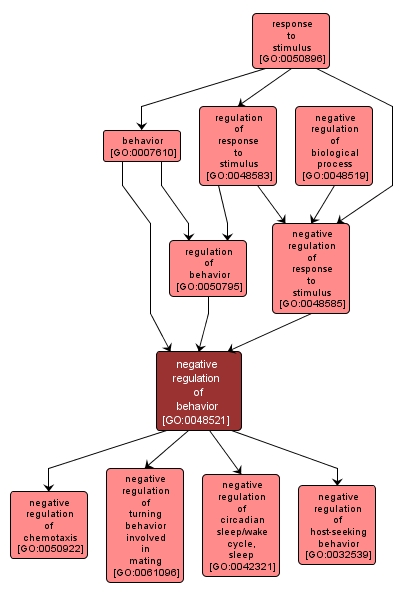GO TERM SUMMARY
|
| Name: |
negative regulation of behavior |
| Acc: |
GO:0048521 |
| Aspect: |
Biological Process |
| Desc: |
Any process that stops, prevents or reduces the frequency, rate or extent of behavior, the specific actions or reactions of an organism in response to external or internal stimuli. |
Synonyms:
- downregulation of behavior
- down-regulation of behavior
- inhibition of behavior
- down regulation of behavior
|
|

|
INTERACTIVE GO GRAPH
|














